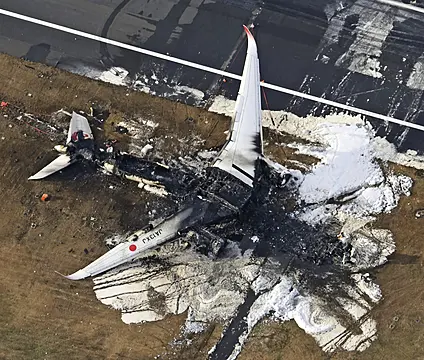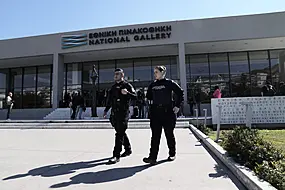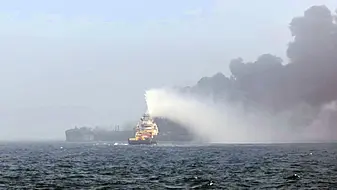Japan’s transportation ministry said it has introduced improved emergency measures for the country’s airports, a week after a fatal collision between a Japan Airlines jetliner and a coast guard plane at Tokyo’s Haneda airport that is seen as a result of human error.
The measures, including more visible stop line markings on taxiways leading to runways and use of clearer language in traffic control communication, are to be implemented right away at Haneda while they are slated to go into effect at other airports across the country in the coming weeks.
The January 2 collision occurred when JAL Flight 516 carrying 379 passengers and crew landed right behind the coast guard aircraft preparing to take off on the same seaside runway, engulfing both aircraft in flames.
All occupants of the JAL’s Airbus A350-900 airliner safely evacuated in 18 minutes. The captain of the coast guard’s much smaller Bombardier Dash-8 escaped with burns but his five crew members died.

The probe into the collision has focused on what caused the coast guard flight crew to believe they had a go-ahead for their take off. A partial release of the air traffic control transcript showed no clear takeoff approval was given to the coast guard plane.
According to the text, the Tokyo air control gave the JAL plane permission to land on the 34R runway, noting that there is a departing plane, with the JAL pilot repeating the instruction.
In the transcript, the traffic control tells the coast guard plane that it was given a “No. 1” priority for takeoff, an expression some experts say might have led the Bombardier crew to mistakenly believe they got a permission to proceed to the runway.
According to a report on Tuesday in the Asahi newspaper, the coast guard plane may have started communication with the traffic control only after the JAL plane got its landing permission and may not have been aware of the airliner’s arrival.
The ministry’s new emergency measures call for making sure pilots understand the terminology specifically related to runway entry, urging them to repeat the instructions given by the traffic controls, and ask if they are uncertain.
They also instruct traffic control not use numerical terms such as No. 1 suggesting takeoff and landing priorities to avoid confusion.
The Haneda traffic control tower has created a new position specifically assigned to monitor a radar system that indicates any unauthorised runway entry, beginning next Saturday.
Haneda airport is the world’s third busiest, and preferred of the two in the Tokyo region because of better accessibility to the city.







